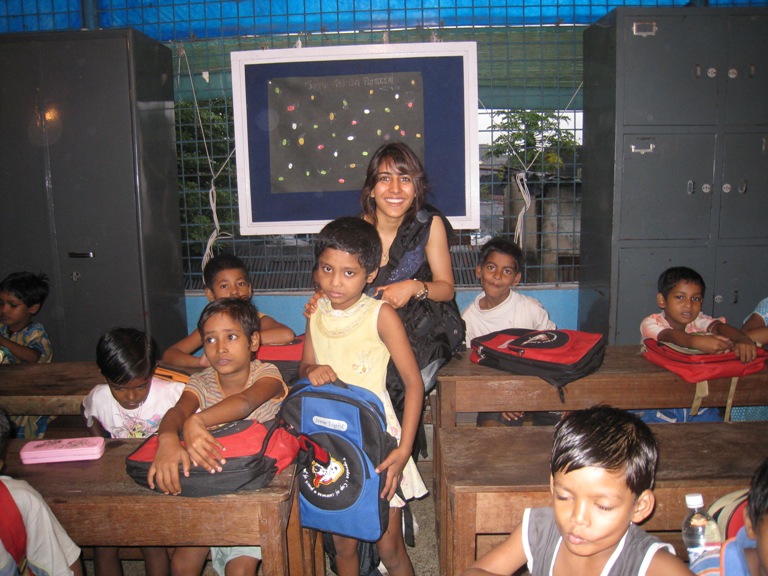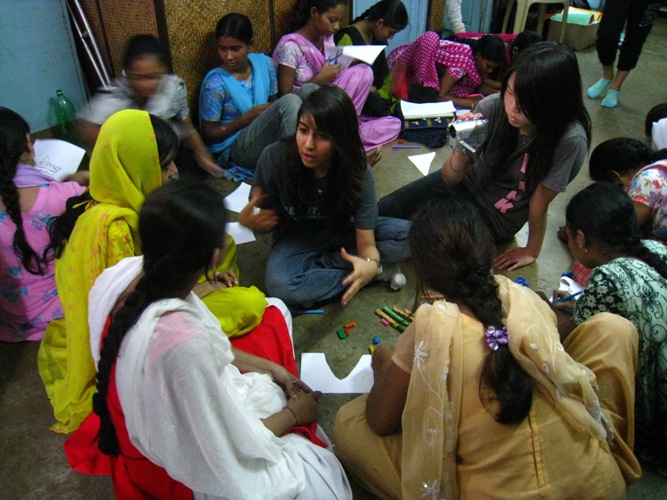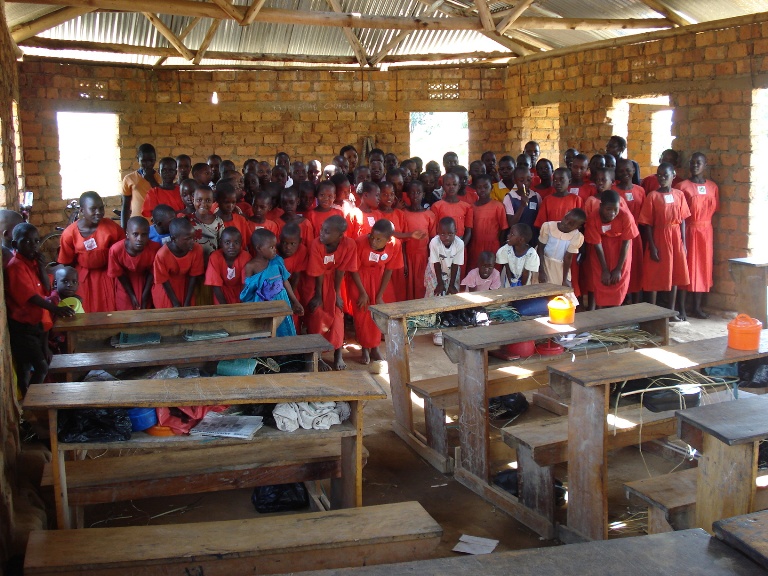Girls Helping Girls
Exclusive Interview with Sejal Hathi, teen founder of a non-profit for girls
Sejal Hathi is a 17-year-old student at Notre Dame High School, in San Jose, California. In 2007, when she was 15, Sejal founded Girls Helping Girls, an international non-profit organization connecting girls from the United States with girls from other countries. The organization fosters self-esteem and helps young women dialogue about important issues, nurture cross-cultural friendships, and collaborate to create social change in their local communities.

Girls Helping Girls
View Larger >
Girls Helping Girls
View Larger >
Girls Helping Girls
View Larger >
Sejal, what inspired you to start Girls Helping Girls?
In the ninth grade I became involved with two non-profit organizations, Youth Service America and Girls for Change. Working with them, I realized that I was privileged and that, unlike my friends and me, many girls around the world were not confident in their abilities and furthermore thought that they had nothing to contribute to the world.
I created Girls Helping Girls because I wanted to reach the most marginal and most vulnerable girls and help them realize their inner voice by providing them with the knowledge, the tools, the support network and the resources necessary to make their vision for the world a reality.
Why did you choose to work internationally instead of locally?
I believe that it is no longer possible to work exclusively in one's own community, in isolation from the rest of the world. We are increasingly becoming a "flat world," as Thomas Friedman would say. Technological innovation and the forces of globalization have almost succeeded in connecting once disparate and sequestered people into a single global synergy.
However, the advent of this global community has brought about a series of interconnected challenges, as one region's problems today inevitably affect the whole world.
Now, our complex and interconnected world demands that we create a new generation of young leaders who are well acquainted with global problems and are prepared to think about possible solutions. At Girls Helping Girls, we are working to shape those leaders.
In your opinion, what is the most critical issue for girls today?
The most fundamental issue for girls today is not poverty, violence or environmental degradation, but something more insidious and subtle: ignorance.
Because so many people are unable to appreciate all human beings as unique gifts, they have ended up shackling themselves to an insular worldview. In the process, they have thwarted not only their own self-realization, but more importantly, that of people who are less equipped to articulate their voice and seize their destiny.
Girls in particular are falling victim to that insular world and that ignorance. We at Girls Helping Girls believe that we can help to expunge ignorance through education, communication and international collaboration.
Can you tell us about your Empower-a-Girl program?
Empower-a-Girl is a grassroots sister-team program that partners girls from the United States with girls in developing countries to work together on achieving one of our four global goals: eradicating poverty, increasing access to education, improving health and promoting peace. The teams can comprise as few as 5 and as many as 100 girls. Currently, we are working with 30 teams from around the world.
It is a year-long program. For the first half of the year, the girls use curriculum guides that we have developed to learn and dialogue about global issues and understand how they relate to their sister team and their own local community.
During the second half of the year, the girls work under our supervision to implement their own social change projects to achieve the particular global goal they have been studying all year.
For example, one team that studied access to education created a literacy program at the local library to teach disadvantaged students reading, writing and arithmetic. Another team based in India helped raise awareness and funds to create a women's vocational center.
The final component of the Empower-a-Girl program is our investment in girls' initiative. Because we believe that girls need to have a holistic education in order to be empowered, we raise funds to pay for their scholarships, provide them with school supplies, books and school uniforms, basic needs like food and water, and help to furnish their classrooms.
Sisters 4 Peace is your social networking initiative for girls. How does it work?
Sisters 4 Peace is a social change platform and a social change movement that provides the one-on-one mentorship to girls across the globe aspiring to be social entrepreneurs. The key principle here is mentorship: girls reaching out to and helping other girls transform themselves into leaders and agents of social change.
Our mentors are experienced girl entrepreneurs called "peace ambassadors" and they mentor and train girls to launch and sustain their own non-profits, businesses or social change programs.
Our peace ambassadors are all experienced change makers. For example, our ambassador from Kyrgyzstan works to reintegrate into schools youth released from juvenile prisons.
Our Kenyan ambassador, who is actually a teen mother, created several small income generation projects to empower other teen mothers and impoverished girls in her community to become independent. One of our U.S. ambassadors created an organization to teach leadership to socio-economically disadvantaged youth.
What are the advantages and the disadvantages of working internationally?
There are always barriers when working internationally. Communication is always going to be a problem, not only because of inherent language differences but also because of cultural differences. For example, it is sometimes difficult for U.S. teams to understand the cultural practices of their sister teams, like veiling, for example. When those situations arise, we struggle to explain that one way of life is not necessarily better than another. It just is.
My two primary colleagues, Angelica Teng and Hanna Kim, and I have also developed a way to facilitate communication between teams to avoid cultural and linguistic misunderstandings.
Our teams communicate via letters and e-mails. The letters always come through the Girls Helping Girls headquarters, where we read them before forwarding them to the teams. If we notice a foreign word, or if a team mentions a national festival or holiday without explaining its meaning, we insert an addendum to explain the word or concept. This way, we ensure that communication is flawless and the learning process fruitful.
How valuable is the Internet to youth international organizing?
The Internet is indispensable. Without it, we would not be where we are now. Everyone has found us through the Internet, we found our partner organizations and peace ambassadors on the Internet and the girls are communicating via the Internet. It is the fundamental backbone of our work. It has really given us the forum and platform to articulate our mission and connect girls across borders and time zones.
I don't want to say that the Internet is the great equalizer because so many people don't have access to the Internet, but for those girls who do, it has been the best medium for exchanging information and collaborating.
Are youth organizing globally around any particular issue today?
There is undoubtedly a movement of young change makers around the world. It is a growing, magnetic movement because youth are inspiring other youth to get involved. Although I don't believe that there is one particular issue that most youth are focusing on, I do think that youth and girls are mobilizing to inspire their peers to get involved in social change.
I think it is hard for youth to organize around a single issue. Young people are passionate about so many things and today they're organizing around whatever makes their blood boil.



